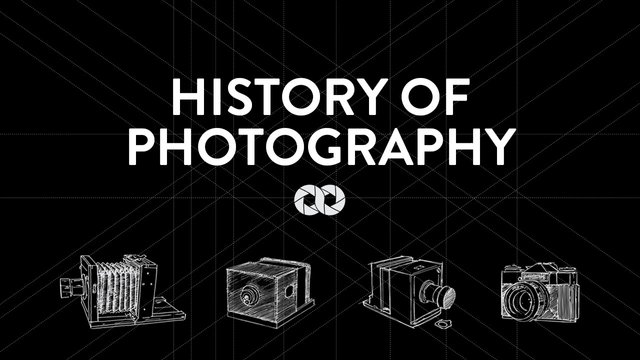History of Photography

Photography has come a long way in its relatively short history. In almost 200 years, the camera developed from a plain box that took blurry photos to the high-tech mini computers we use in our DSLRs and smartphones today.
The basic concept of photography has been around since about the 5th-century B.C.E. It wasn't until an Iraqi scientist developed something called the camera obscura in the 11th-century that the art was born.
Even then, the camera did not actually record images, it simply projected them onto another surface. The images were also upside down though they could be traced to create accurate drawings of real objects such as buildings.
Photography, as we know it today, began in the late 1830s in France. Joseph Nicéphore Niépce used a portable camera obscura to expose a pewter plate coated with bitumen to light.
This is the first recorded image that did not fade quickly.
Within each type of emulsion, photographers experimented with different chemicals and techniques.
Emulsion plates, or wet plates, were less expensive than daguerreotypes and took only two or three seconds of exposure time. This made them much more suited to portrait photography, which was the most common photography at the time. Many photographs from the Civil War were produced on wet plates.
These wet plates used an emulsion process called the Collodion process, rather than a simple coating on the image plate. It was during this time that bellows were added to cameras to help with focusing.
Photography was only for professionals and the very rich until George Eastman started a company called Kodak in the 1880s.
The consumer would take pictures and send the camera back to the factory for the film to be developed and prints made, much like modern disposable cameras. This was the first camera inexpensive enough for the average person to afford.
In the 1950s, Asahi (which later became Pentax) introduced the Asahiflex and Nikon introduced its Nikon F camera. These were both SLR-type cameras and the Nikon F allowed for interchangeable lenses and other accessories.
For the next 30 years, SLR-style cameras remained the camera of choice and many improvements were introduced to both the cameras and the film itself.
In the late 1970s and early 1980s, compact cameras that were capable of making image control decisions on their own were introduced. These "point and shoot" cameras calculated shutter speed, aperture, and focus, leaving photographers free to concentrate on composition.
These cameras became immensely popular with casual photographers. Professionals and serious amateurs continued to prefer to make their own adjustments and enjoyed the image control of SLR cameras.
In the 1980s and 1990s, numerous manufacturers worked on cameras that stored images electronically. The first of these were point-and-shoot cameras that used digital media instead of film.
By 1991, Kodak had produced the first digital camera that was advanced enough to be used successfully by professionals. Other manufacturers quickly followed and today Canon, Nikon, Pentax, and other manufacturers offer advanced digital SLR (DSLR) cameras.
✅ @mikechang, I gave you an upvote on your post! Please give me a follow and I will give you a follow in return and possible future votes!
Thank you in advance!
Hi! I am a robot. I just upvoted you! I found similar content that readers might be interested in:
https://www.thesprucecrafts.com/brief-history-of-photography-2688527
https://steemit.com/free/@bible.com/4qcr2i
Congratulations @mikechang! You have completed some achievement on Steemit and have been rewarded with new badge(s) :
Click on the badge to view your Board of Honor.
If you no longer want to receive notifications, reply to this comment with the word
STOPDo not miss the last post from @steemitboard!
Participate in the SteemitBoard World Cup Contest!
Collect World Cup badges and win free SBD
Support the Gold Sponsors of the contest: @good-karma and @lukestokes